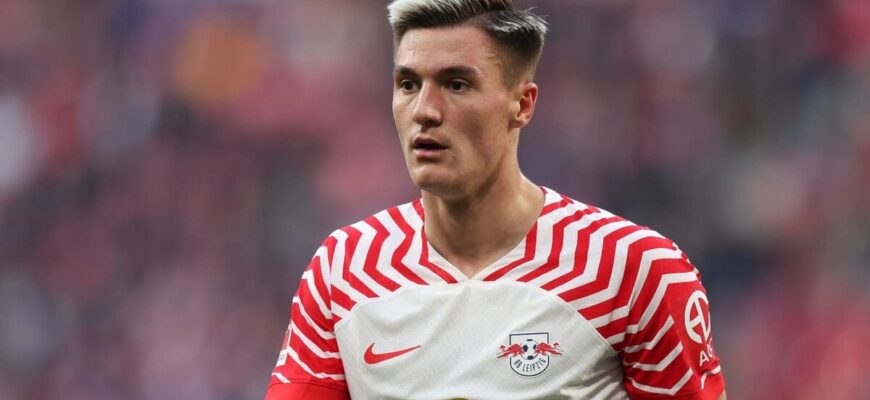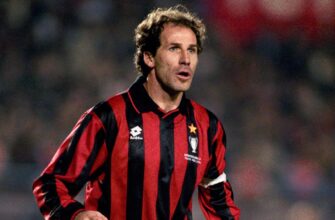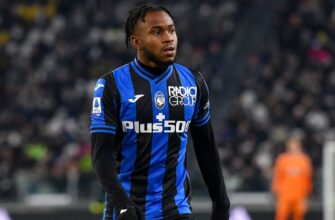In the high-octane theatre of Premier League football, where fortunes are won and lost with every transfer window, the emergence of a prodigious talent invariably sparks a frenzy. This summer, the spotlight shines brightly on Benjamin Sesko, the Slovenian striker from RB Leipzig, whose name has become synonymous with a multi-million-dollar bidding war. As Manchester United and Newcastle United intensify their pursuit, the fundamental question isn`t just about his price tag, but whether this 22-year-old phenom is truly ready for England`s top flight, and more critically, which environment offers the fertile ground for his undeniable, yet still raw, potential.
Sesko`s Blueprint: Power, Pace, and Promise
Sesko arrives with a compelling resume of physical attributes. Standing tall, he combines the aerial prowess of a classic number nine with a surprising turn of pace and immense power. His comfort with both feet, while favoring his right, suggests a versatile attacking profile rarely seen in players of his build. His record at Leipzig, 39 goals in 87 appearances across all competitions, certainly hints at a striker capable of finding the net.
However, football, like any complex system, requires a deeper statistical dive. While his raw output is commendable, a more analytical look at his Expected Goals (xG) figures reveals a nuanced picture. Averaging 0.43 xG per 90 minutes places him in the 69th percentile for forwards in Europe`s top five leagues. This isn`t poor, but it suggests an element of `feast or famine` in his shot selection. When non-penalty xG is considered, the figure drops to the 50th percentile, indicating that a significant portion of his goals may come from situations that are not consistently repeatable or from a high volume of less optimal shots. The message is clear: the talent is undeniable, but the finishing school is still in session.
The Premier League Crucible: A Test of Resolve
The Premier League is a relentless beast, demanding not only technical brilliance but also an iron will. Its speed, physicality, and tactical diversity can overwhelm even seasoned professionals. For a young striker still refining his craft, the transition can be jarring. Sesko`s current reliance on sheer power in tight situations, while effective in some contexts, may prove less so against the more structured and robust defenses of the Premier League. The challenge for any acquiring club will be to integrate him without stifling his natural instincts, while simultaneously coaching him towards a more varied and efficient attacking repertoire.
A Tale of Two Suitors: United`s Legacy vs. Newcastle`s Pragmatism
The choice of club is paramount. Both Manchester United and Newcastle United present distinct opportunities and equally distinct risks.
Manchester United: The Burden of the Badge
Manchester United, a club perennially in search of a new Messiah, offers Sesko a chance to lead the line for one of the world`s most famous teams. Under new management, Ruben Amorim`s preferred 3-4-3 system could theoretically provide a framework for Sesko to flourish, potentially linking up with midfield linchpin Bruno Fernandes. The prospect of being part of a significant attacking overhaul, alongside names like Matheus Cunha and Bryan Mbeumo, paints an exciting picture.
Yet, the legacy of the Manchester United number nine shirt comes with a history of immense, almost suffocating, pressure. Young strikers, even those of immense promise, have frequently struggled to meet the immediate, often unrealistic, expectations. Rasmus Hojlund, for instance, arrived at Old Trafford at just 20 and has endured two seasons of intense scrutiny, yet to cement his status as the club`s primary goal threat. For Sesko, joining United would be a bet not just on his ability, but on his mental fortitude to navigate a spotlight that can either forge diamonds or crush them.
Newcastle United: The Cultivation Project
Newcastle United, arguably a more pragmatic choice, presents a different kind of challenge and opportunity. Having consistently qualified for the UEFA Champions League, their ambitions are high, but their approach appears more grounded in steady development. Manager Eddie Howe has a commendable track record of transforming “diamonds in the rough” into reliable Premier League performers, as seen with Anthony Gordon, Jacob Murphy, and Joe Willock. If Alexander Isak departs for Liverpool, Sesko would indeed step into significant shoes, but potentially within an ecosystem more conducive to gradual growth.
The pressure at Newcastle, while substantial given their recent success, is arguably different from United`s. It`s a pressure to contribute and improve within a collective, rather than an expectation to be the singular, immediate solution. Howe`s ability to get the best out of players by fitting them into a cohesive system could prove invaluable for Sesko, allowing him a potentially fairer environment to adapt to the Premier League`s rigors.
Ultimately, Benjamin Sesko`s journey to becoming a complete Premier League striker is not merely about the size of the transfer fee. It`s about the foresight of the club that acquires him, their ability to provide the right tactical framework, and crucially, the patience to nurture potential without succumbing to the relentless demand for instant gratification. The raw talent is undeniably present; the true test lies in which club can transform that promising blueprint into a finished masterpiece on the grand stage of English football. In this multi-million-dollar gamble, the wise investor understands that the greatest returns often come from astute management, not just a hefty initial outlay.









